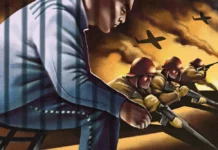So, did you hear? That whole story of Paul Pelosi being attacked was faked—another false flag operation!1 And the January 6 attack on the Capitol Building? Give me a break! That was another false flag operation, orchestrated by the FBI and those radical lefties from Antifa!2 Oh, yeah—and then there were those faked school shootings in Newtown, Connecticut, and Parkland, Florida…3
Baseless claims of this sort (which I have paraphrased) are easy to find on social media like Instagram and Twitter, despite some efforts to remove them by the sites. It may be tempting to dismiss such “conspiracy theories” as the ramblings of a few addled extremists—but I believe that would be a misreading of the problem. So-called “false flag conspiracy theories” (FFCTs) are not uncommon in some subcultures in the US, and represent a subset of conspiracy theories in general. Survey data show that about half of the US population believes in at least 1 conspiracy theory.4 For example, nearly 1 in 5 Americans believe mass shootings have been faked by groups trying to promote stricter gun-control laws.5
My colleague, Joseph M. Pierre, MD, and I have discussed the general features of conspiracy theories in detail,6 and I will merely summarize our conclusions here. I will then explore the “false flag” concept in detail, linking it to a variety of political, sociological, and psychological factors. I will also examine the ways in which modern technology has contributed to the viral spread of FFCTs. First, though, we need to review some foundational terms and concepts.
What is a Conspiracy Theory?
In simplest terms, a conspiracy theory is the belief or assertion that a group of individuals has met in secret agreement, with the purpose of achieving some malevolent goal.7 As Dr Pierre and I have written6:
“…conspiracy theories are usually, but not necessarily, false. They are typically shared beliefs that don’t explicitly or directly involve the believer, and are based on evidence that one finds “out there,” such as on the internet. This speaks to the highly communal nature of so many conspiracy theories — networks of like-minded individuals reinforcing one another’s beliefs in a particular socio-cultural context.”
Conspiracy theories differ from delusions, which are broadly defined as fixed, false, usually unshared beliefs, often based on subjective “inner” experiences (such as hearing “voices”) rather than on communal affirmation via some network of like-minded individuals. It is important to state that conspiracy theories may be associated with both the political “left” and “right,” and may be endorsed by both liberals and conservatives (variously defined), depending on the particular theory. That said, most recent FFCTs appear to have arisen among extreme right-wing groups or like-minded individuals.
A FFCT is thus a sub-type of conspiracy theory, alleging that some “…hostile or harmful action (such as an attack) was designed to look like it was perpetrated by someone other than the person or group responsible for it.”8
False Flag Operations Old and New
How did the term “false flag” arise in the first place? It probably derives from the misuse of actual flags. Specifically, “…a false flag operation referred to a military force or a ship flying another country’s flag for the purposes of deception.”9 As Politifact’s Louis Jacobson and Bill McCarthy explain9:
“For generations, governments have mounted false flag operations, in which they justify military action by deceptively accusing an enemy of a violent act. However, actual false flags plotted in recent history are outnumbered by dubious conspiracy theories that label real, verifiable crisis events as “false flags.””
It is clearly important to distinguish an actual false flag operation from a false flag conspiracy theory. Similarly, an accusation that some party is planning a false flag operation may have substantial credibility. For example, in early February 2022, the US accused Russia of plotting a fake attack by Ukrainian forces as a pretext for invading the neighboring country. US officials would not disclose precisely how they learned of this plot, but an earlier Russian disinformation campaign lent credence to the US accusation.10
There are many historical examples of actual false flag operations. One of the most notorious involved a false flag operation mounted by Nazi Germany in 1939 as justification for starting World War II. The Gestapo staged a raid on a German broadcasting tower, and made it look as if Polish forces had carried out the attack—all this as a pretext for the Nazi invasion of Poland.9
Is There a FFCT Profile?
Since FFCTs represent a subset of conspiracy theories, it seems plausible that false flag conspiracy theorizers share some general features with the broader set of conspiracy theorists. However, it is difficult to construct a reliable profile of the typical conspiracy theorist (CT). Although some studies have linked CTs with low educational level, extreme right-wing political orientation, and paranoid personality traits, these findings have been inconsistent and may vary among specific conspiracy theories. That said, results from 4 large studies of US adults found that a strong mistrust of “officialdom” is a major factor in the conspiratorial mindset, particularly (and disproportionately) among political conservatives.11
Indeed, Dr Pierre has proposed a 2-component model of belief in conspiracy theories, consisting of epistemic mistrust (mistrusting “authoritative” knowledge) and biased information processing. The latter usually involves exposure to misinformation, often transmitted by word of mouth or via social networks12—a point I will return to later. Dr Pierre has also noted that FFCTs usually align with the theorizer’s political ideology. For example13:
“…Holocaust denialism is embraced by people with antisemitic attitudes. Similarly, people who are drawn to false flag conspiracies about mass shootings will predictably be those with strong beliefs about gun ownership and gun rights who are mistrustful of government in general and liberals in particular.”
The Epistemic Divide: We Have Met the Anomie, and It is Ours
I have been particularly interested in more general societal trends in the US that may be contributing to the proliferation of FFCTs. Here, a bit of background in sociology is helpful. The term anomie (or anomy) was coined by the French sociologist, Emile Durkheim (1858-1917). Put simply, anomie is a state of “normlessness,” in which “…there is a disintegration or disappearance of the norms and values that were previously common to the society.”14 Anomie may lead to profound alterations in the way people view themselves, in relation to the larger culture. Specifically14:
“People who [live] during periods of anomie typically feel disconnected from their society because they no longer see the norms and values that they hold dear reflected in society itself. This leads to the feeling that one does not belong and is not meaningfully connected to others.”
In my view, American society over the past 25 to 30 years has shown signs of just such social disconnection, owing to the fracturing or fragmenting of commonly held norms and values. The columnist David Brooks alluded to this when he wrote of “the fraying of the social fabric” in this country, and15:
“…a long-term loss of solidarity, a long-term rise in estrangement and hostility. This is what it feels like to live in a society that is dissolving from the bottom up as much as from the top down.”
In particular, the traditional sources of authoritative knowledge have been seriously challenged or denigrated. This has been vividly demonstrated during the current COVID-19 pandemic, which has generated not only numerous conspiracy theories, but also deep-seated mistrust of previously respected medical authorities, such as Anthony Fauci, MD. As a recent Washington Post piece on Dr Fauci noted16:
““There is no truth,” Fauci says, for effect. “There is no fact.” People believe hydroxychloroquine works because an Internet charlatan claims it does. People believe the 2020 election was stolen because a former president says so. People believe that Fauci killed millions of people for the good of his stock portfolio because it’s implied by TV pundits, Internet trolls and even elected leaders. Fauci is unnerved by “the almost incomprehensible culture of lies” that has spread among the populace, infected major organs of the government, manifested as ghastly threats against him and his family. His office staff, normally focused on communicating science to the public, has been conscripted into skirmishes over conspiracy theories and misinformation.”
In this regard, recent research has found that perceptions of anomie—ie, a lack of social trust, and the belief that the moral order or social fabric of society is deteriorating—are associated with COVID-19 vaccine hesitancy.17 However, the problem of what and whom to trust goes beyond any one issue. Rather, vitriolic debates have ensued over knowledge itself; that is, what can legitimately be considered “facts.” The result is what law professors Johannes Buchheim and Gilad Abiri have called “the epistemic divide.”18
Buchheim and Abiri describe how “…substantial parts of populations in liberal democracies live in epistemically different worlds from mainstream society…[and] believe in alternative realities on a broad range of factual issues.”18
Dr Pierre has argued that “…informational diversity has…taken us further away from objective truth and made us more likely to disagree with each other.”19 Indeed, some political operatives have even defended the use of “alternative facts.”20
In such a hothouse climate of skepticism, disbelief, and disagreement, conspiracy theories arise and thrive. Thus, it should not surprise us that FFCTs have proliferated and flourished in this country.
Conspiracy Theories, Social Media, and Online Misinformation
Mark Twain is said to have quipped, “A lie can travel around the world and back again while the truth is lacing up its boots.” In the age of instant online communication, a lie can achieve these distances in a matter of seconds. The potential for internet technology to foster the spread of FFCTs and other conspiracy theories is all too obvious.
As Dr. Pierre has observed21:
“…in terms of the spread of misinformation, the role of the internet is hard to ignore, particularly when considering the vast amount of information and misinformation out there…When you don’t trust the authoritative account of things or when you don’t trust in traditional institutions of knowledge, this can result in an “epistemic vacuum” or “informational void” that one then tries to fill. In this day and age, people tend to do that through…online “research” as opposed to in-person conversation.”
False Flags and the “Evil Twin” Archetype
In my view, conventional political, psychological, and sociological explanations for the FFCTs are very helpful—but take us only so far. Society’s penchant for inventing what I would call “mistaken identity” motifs seems to be a very ancient part of human psychology—what Jungian psychologists refer to as an archetype. Broadly speaking, we are dealing with what I call “othering.” With respect to the commission of evil acts and false flags, this archetype can be summed up in the statements, “That wasn’t me! It was another— someone who looks just like me and is trying to make me look guilty!”
In the realm of mythology, there are many examples of the “evil twin” motif. Thus, in Egyptian mythology, we find the twin gods, Osiris and Set—the former good, the latter evil. Set hated Osiris and eventually killed him. Similarly, in the mythology of ancient Persia, we find the twin gods Ahura Mazda and Ahriman—representing, respectively, the spirit of good and the spirit of evil.
Although I am not aware of any research to confirm this, I would hypothesize that some FFCTs are fundamentally related to this basic human propensity; namely, to invent “evil others” who impersonate—and thereby incriminate—their “good” counterparts. While this is typically a conscious process with some obvious self-serving purpose, I suspect that—on an unconscious level—these “evil twins” represent disowned and projected parts of our own psyches. Using this formulation, it is not hard to imagine one group of political extremists claiming, for example, “Oh, no, that wasn’t our group that did that evil deed! It was our ideological opposites, disguised to look like us!” This psychodynamic hypothesis, of course, in no way negates the political and sociocultural explanations of FFCTs that I have discussed.
What Can Be Done to Stem the Flow of FFCTs?
There are reasons to suppose that counteracting FFCTs in this country will be an uphill climb. Consider the fact that 42% of Americans believe that ghosts really exist; 29% believe in astrology; 21% believe the government is hiding space aliens; and 14% of Americans believe in Bigfoot.22
I would suggest that suboptimal science education in the US bears at least some of the blame for these beliefs, and arguably, for certain kinds of science-related conspiracy theories, such as the bizarre claims surrounding vaccines against COVID-19.23,24 It is telling, for example, that fewer than one-third of California students met or exceeded standards on a new science test developed by the California Department of Education.25 Improving science education, emphasizing the philosophy of science, and teaching young people how to think critically about pseudoscientific claims might reduce the likelihood of some conspiracy theories—but, in my view, would probably have a small effect.
It is tempting to argue that the tsunami of online misinformation and conspiracy theories requires tighter regulation of online content—and in particular, of social media. This is a controversy playing out dramatically in the wake of Elon Musk’s acquisition of Twitter.26 My own view is that monitoring social media for misleading information, while necessary, is very unlikely to stem the tide of conspiracy theories, which typically tend to move to “darker” areas of the internet.
I therefore return to the communal aspect of conspiracy theories, as Dr Pierre and I have discussed.6 Indeed, Sander van der Linden, a professor of social psychology, has pointed to “…the social support that communities around conspiracy theories can provide.”24 If we are to stem the flow of conspiracy theories, I suspect that we will need a much better understanding of these subcultural support communities—how they function, how they attract followers, and how we might offer constructive alternatives to these communities.
For the time being, one obvious defense against conspiracy theories is the simple propagation of accurate information, making use of the same internet-based systems and social media that have helped fuel our country’s conspiratorial fires. Finally, as Dr Pierre has suggested to me, countering FFCTs may be “…more about how to get people to stop lying rather than to combat misinformation per se…” (personal communication, 11/27/22). Holding conspiracy theorists accountable for the lies they spread—for example, by bringing lawsuits against them—may prove at least as important as getting the facts out to the general public.27
Dr Pies is Professor Emeritus of Psychiatry and Lecturer on Bioethics and Humanities, SUNY Upstate Medical University; Clinical Professor of Psychiatry, Tufts University School of Medicine; and Editor in Chief Emeritus of Psychiatric TimesTM (2007-2010). Dr Pies is the author of several books. A collection of his works can be found on Amazon.
Acknowledgment: I would like to thank Joseph M. Pierre, MD, for his helpful comments on an earlier draft of this article.
References
1. O’ Rourke C. No, the Paul Pelosi attack wasn’t a ‘false flag.’ Politifact. November 5, 2022. Accessed January 10, 2023. https://www.politifact.com/factchecks/2022/nov/05/instagram-posts/no-the-paul-pelosi-attack-wasnt-a-false-flag/
2. Folkenflik D, Dreisbach T. ‘Off the rails’: New Tucker Carlson project for Fox embraces conspiracy theories. NPR. November 3, 2021. Accessed January 10, 2023. https://www.npr.org/2021/11/03/1051607945/tucker-carlson-fox-news-insurrection-conspiracy-new-show
3. Salcedo A. Advocacy groups push for Marjorie Taylor Greene’s resignation over report that she spread falsehoods about school shootings. Washington Post. January 22, 2021. Accessed January 10, 2023. https://www.washingtonpost.com/nation/2021/01/22/marjorie-taylor-greene-parkland-sandyhook/
4. Oliver JE, Wood T. Medical conspiracy theories and health behaviors in the United States. JAMA Intern Med. 2014;174(5):817-818.
5. Orth T, Frankovic K. Most Americans don’t trust Alex Jones, but some still believe that mass shootings have been faked. YouGovAmerica. August 12, 2022. Accessed January 10, 2023. https://today.yougov.com/topics/politics/articles-reports/2022/08/12/most-americans-dont-trust-alex-jones-poll
6. Pies RW, Pierre JM. Believing in conspiracy theories is not delusional. Medscape. February 4, 2021. Accessed January 10, 2023. https://www.medscape.com/viewarticle/945290
7. van Prooijen JW, van Vugt M. Conspiracy theories: evolved functions and psychological mechanisms. Perspect Psychol Sci. 2018;13(6):770-788.
8. False flag. Merriam-Webster Dictionary. Accessed January 10, 2023. https://www.merriam-webster.com/dictionary/false%20flag
9. Jacobson L, McCarthy B. False flags: they’re real, but far less widespread than social media suggest. Politifact. February 8, 2022. Accessed January 10, 2023. https://www.politifact.com/article/2022/feb/08/false-flags-theyre-real-far-less-widespread-social/
10. Barnes JE. U.S. exposes what it says is Russian effort to fabricate pretext for invasion. New York Times. February 3, 2022. https://www.nytimes.com/2022/02/03/us/politics/russia-ukraine-invasion-pretext.html
11. van der Linden S, Panagopoulos C, Azevedo F, Jost JT. The paranoid style in American Politics revisited: an ideological asymmetry in conspiratorial thinking. Political Psychology. 2021;42(1):23-51.
12. Pierre JM. Mistrust and misinformation: a two-component, socio-epistemic model of belief in conspiracy theories. Journal of Social and Political Psychology. 2020;8(2):617-641.
13. Funke D. Why do some people think mass shootings are staged every time? Politifact. August 8, 2019. Accessed January 10, 2023. https://www.politifact.com/article/2019/aug/08/why-do-some-people-think-mass-shootings-are-staged/
14. Crossman A. What is anomie? ThoughtCo. July 2, 2019. Accessed January 10, 2023. https://www.thoughtco.com/anomie-definition-3026052
15. Brooks D. America is falling apart at the seams. New York Times. January 13, 2022. Accessed January 10, 2023. https://www.nytimes.com/2022/01/13/opinion/america-falling-apart.html
16. Zak D, Roberts R. Anthony Fauci is up against more than a virus. Washington Post. January 27, 2022. Accessed January 10, 2023. https://www.washingtonpost.com/lifestyle/2022/01/27/fauci-pandemic-threats/
17. McCarthy M, Murphy K, Sargeant E, Williamson H. Examining the relationship between conspiracy theories and COVID-19 vaccine hesitancy: a mediating role for perceived health threats, trust, and anomie? Anal Soc Issues Public Policy. 2022;22(1):106-129.
18. Buchheim J, Abiri G.The war in Ukraine, fake news, and the digital epistemic divide. Verfassungsblog. May 12, 2022. Accessed January 10, 2023. https://verfassungsblog.de/the-war-in-ukraine-fake-news-and-the-digital-epistemic-divide/
19. Pierre J. Alternate realities: a tale of two echo chambers. Psychology Today. January 7, 2021. Accessed January 10, 2023. https://www.psychologytoday.com/us/blog/psych-unseen/202101/alternate-realities-tale-two-echo-chambers
20. Gajanan M. Kellyanne Conway defends White House’s falsehoods as ‘alternative facts.’ TIME. January 22, 2017. Accessed January 10, 2023. https://time.com/4642689/kellyanne-conway-sean-spicer-donald-trump-alternative-facts/
21. Pierre J. Why do false flag conspiracy theories follow mass shootings? Psychology Today. August 14, 2019. Accessed January 10, 2023. https://www.psychologytoday.com/us/blog/psych-unseen/201908/why-do-false-flag-conspiracy-theories-follow-mass-shootings
22. Van der Linden S. How come some people believe in the paranormal? Scientific American. September 1, 2015. Accessed January 10, 2023. https://www.scientificamerican.com/article/how-come-some-people-believe-in-the-paranormal/
23. Pies RW. How American culture created the pandemic of the unvaccinated. Psychiatric Times. October 5, 2021. https://www.psychiatrictimes.com/view/american-culture-pandemic-unvaccinated
24. Kelly ML. Their mom died of COVID. They say conspiracy theories are what really killed her. NPR. April 24, 2022. Accessed January 10, 2023. https://www.npr.org/sections/health-shots/2022/04/24/1089786147/covid-conspiracy-theories
25. Johnson S. Less than a third of California students met or exceeded standards on new science test. EdSource. February 7, 2020. Accessed January 10, 2023. https://edsource.org/2020/less-than-a-third-of-california-students-met-or-exceeded-standards-on-new-science-test/623514
26. Elon Musk declares Twitter ‘moderation council’ – as some push the platform’s limits. The Guardian. October 29, 2022. Accessed January 10, 2023. https://www.theguardian.com/technology/2022/oct/28/elon-musk-twitter-moderation-council-free-speech
27. Asgarian R. Texas judge rules Alex Jones must pay Sandy Hook parents full $49 million in defamation case. The Texas Tribune. November 23, 2022. Accessed January 10, 2023. https://www.texastribune.org/2022/11/23/alex-jones-texas-lawsuit-damages/
https://www.psychiatrictimes.com/view/false-flag-conspiracy-theories-psyche-society-and-the-internet







